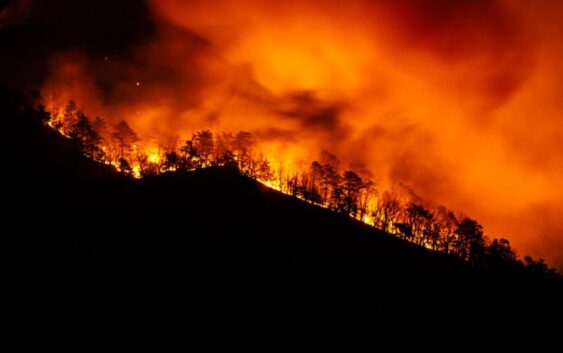- Seven months after Hurricane Helene, Chimney Rock rebuilds with resilience
- Wildfire in New Jersey Pine Barrens expected to grow before it’s contained, officials say
- Storm damage forces recovery efforts in Lancaster, Chester counties
- Evacuation orders lifted as fast-moving New Jersey wildfire burns
- Heartbreak for NC resident as wildfire reduces lifetime home to ashes
Why North Carolina has a fall wildfire season

Temperatures, humidity, wind, and precipitation can all impact the start and spread of wildfires.
CHARLOTTE, N.C. — Fall is one season when North Carolina sees a peak in wildfires.
Ninenty-nine percent of wildfires in North Carolinas are caused by human activity, according to Philip Jackson of the North Carolina Forest Service. Weather can either suppress the fire or cause it to spread.
“You have a lot of leaves that will start changing colors, start falling off the trees,” Jackson explained. “You’ll have that fuel source through leaf litter. But those low humidity days will contribute to drying out those fuels.”
RAISE YOUR WEATHER IQ: Why autumn leaves change colors
Temperatures, humidity, wind, and precipitation can all impact wildfires.
Warmer temperatures and low humidity can cause vegetation to dry out. Gusty winds can quickly spread wildfires and make them difficult to contain. However, significant rainfall can reduce the risk of wildfires.
“We had an extremely active fall wildfire season last year in 2023. Particularly in the western part of the state where we had I think it was about a thousand wildfires alone in November,” Jackson explained. “We had several large wildfire incidents going on in western North Carolina to the point where we had to activate a state-issued burn ban that impacted about one third of the state.”
Jackson said some five thousand wildfires occur across the state from the coast to mountains every year.
“Weather is a huge component. It pretty much dictates how your day is going to go in terms of firefighting,” he said. “I’ll compare it when we do prescribe burns. We’ve got to have certain weather parameters that fall in place in certain areas and if they don’t, we won’t burn because it will not be a good burning day.”
Smoke from wildfires can have an impact by reducing air quality and visibility.
To avoid starting a wildfire when conditions are dry and windy, remember to stay Weather Aware if a red flag warning or burn ban is in effect.
Contact KJ Jacobs at kjacobs3@wcnc.com and follow him on Facebook, X and Instagram.